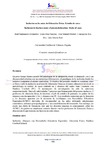Mostrar el registro sencillo del ítem
Inclusión en las aulas de educación física: estudio de casos
| dc.contributor.author | Santamaría Fernández, Raúl | |
| dc.contributor.author | Ruiz Sanchis, Laura | |
| dc.contributor.author | Puchalt, José Manuel | |
| dc.contributor.author | Ros Ros, Concepciçon | |
| dc.contributor.author | Martín Ruiz, Julio | |
| dc.date.accessioned | 2016-12-05T09:17:27Z | |
| dc.date.available | 2016-12-05T09:17:27Z | |
| dc.date.issued | 2016 | |
| dc.identifier.citation | Sportis, 2016, 2 (3): 496-514 ISSN: 2386-8333 | |
| dc.identifier.issn | 2386-8333 | |
| dc.identifier.uri | http://hdl.handle.net/2183/17727 | |
| dc.description.abstract | [Resumen] En poco tiempo hemos pasado del paradigma de la integración donde el alumnado con y sin discapacidad estudian con un currículum diferenciado, al paradigma de la inclusión donde los alumnos comparten el mismo currículum. El objetivo del presente estudio es examinar como se lleva a cabo la inclusión en el área de Educación Física en el centro educativoa través de la metodología de estudio de casos centrado en 2 alumnos del centro Juan Comenius con Parálisis Cerebral (PC). El instrumento de investigación ha sido la entrevista semiestructurada. Han sido entrevistadas 7 personas que forman parte del proceso inclusivo; 2 profesores de educación física, la directora, el jefe de estudios de primaria, los padres de los alumnos con discapacidad y los 2 alumnos con PC. Los resultados muestran que la dirección y los docentes apuestan por la inclusión de losAlumnos con Necesidades Educativas Especiales(ACNEE) derivadas de discapacidad en las aulas utilizando adaptaciones curriculares, informes psicopedagógicos y una sensibilización del alumnado. Sin embargo, no existe una oferta de formación para que los docentes amplíen su conocimiento sobre los ACNEE, los padres no mantienen contacto directo con los profesores de Educación Física y desconocen lo que realizan sus hijos/as en estas clases. | |
| dc.description.abstract | [Abstract] In a short time, we have gone from the paradigm of the integration where students with and without disabilities are educated with a differentiated curriculum, the paradigm of inclusion where students share the same curriculum. The objective of this study is to examine as is carried out the inclusion in the area of physical education in the educative center through the methodology of case study, centering on 2 students from the center Juan Comenius with Cerebral Palsy (CP). Have been interviewed (semistructured interview) 7 people who are part of the inclusive process (2 physical education teachers, the director, the head of primary education, parents of students with disabilities and the 2 students with CP). The results show that the address and the teachers are betting on the inclusion of pupils with Special Educational Needs due to disability in the classroom using curricular adaptations, psychopedagogical reports and an awareness of the students. However, there is not an offer of training for teachers to expand their knowledge about the PSEN, Parents do not maintain direct contact with the physical education teachers and unaware of what made their children in these classes. | |
| dc.language.iso | spa | |
| dc.publisher | Universidade da Coruña | |
| dc.relation.uri | http://dx.doi.org/10.17979/sportis.2016.2.3.1511 | |
| dc.subject | Inclusión | |
| dc.subject | Alumnos con necesidades educativas especiales | |
| dc.subject | Educación física | |
| dc.subject | Parálisis cerebral infantil | |
| dc.subject | Inclusion | |
| dc.subject | Pupils with special needs education | |
| dc.subject | Physical education | |
| dc.subject | Cerebral palsy | |
| dc.title | Inclusión en las aulas de educación física: estudio de casos | |
| dc.title.alternative | Inclusion in the classrooms of physical education: study of cases | |
| dc.type | info:eu-repo/semantics/other | |
| dc.rights.access | info:eu-repo/semantics/openAccess | |
| UDC.journalTitle | Sportis | |
| UDC.volume | 2 | |
| UDC.issue | 3 | |
| UDC.startPage | 496 | |
| UDC.endPage | 514 |






